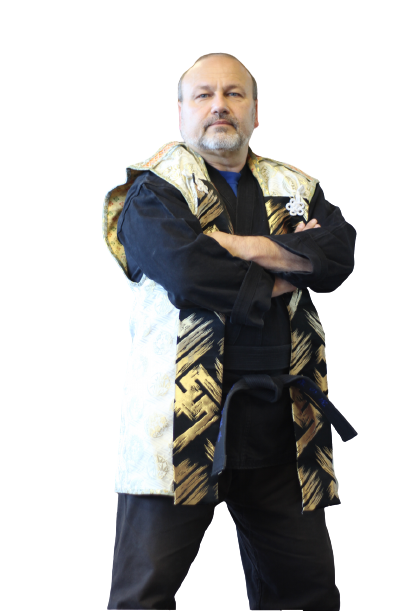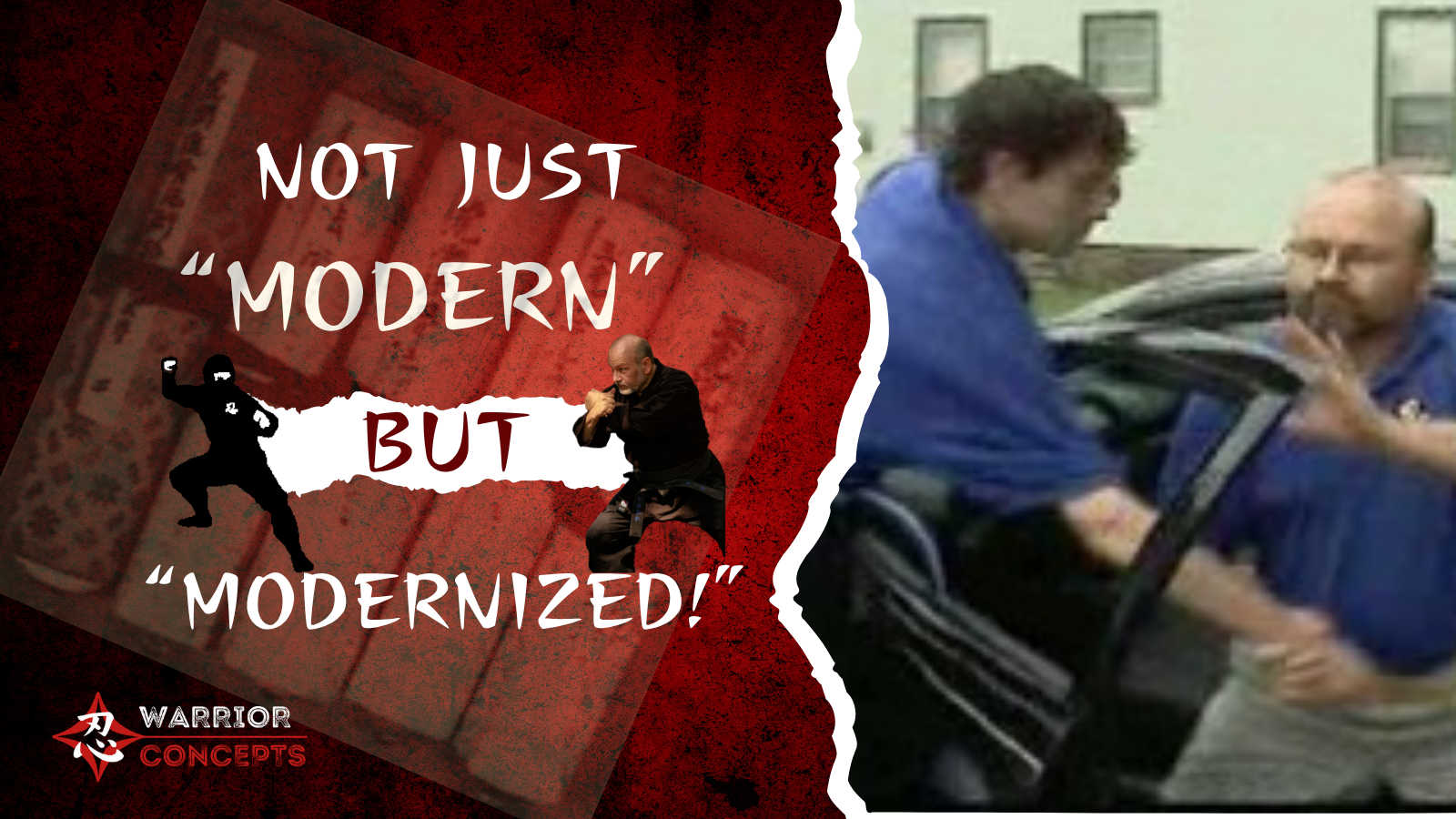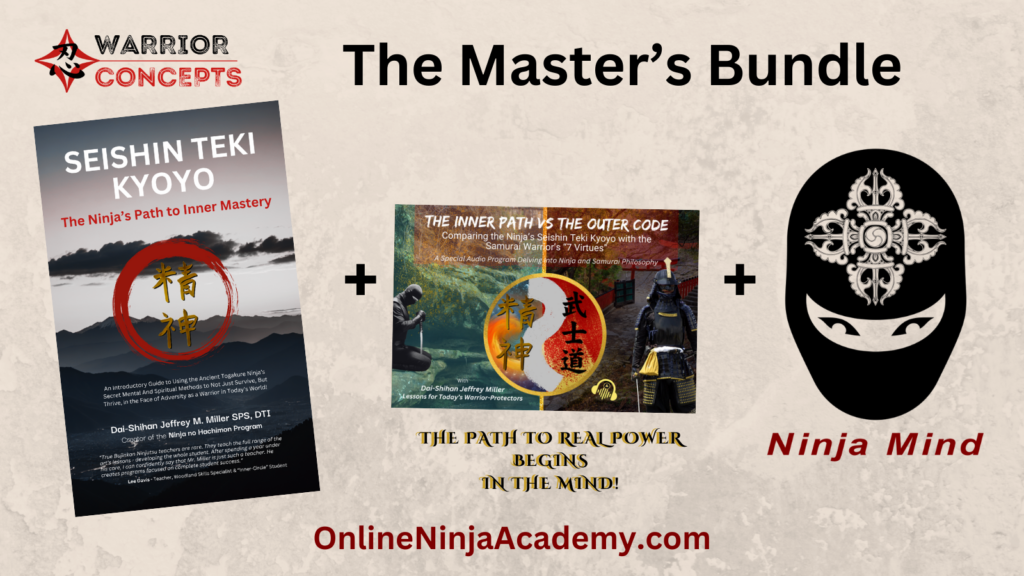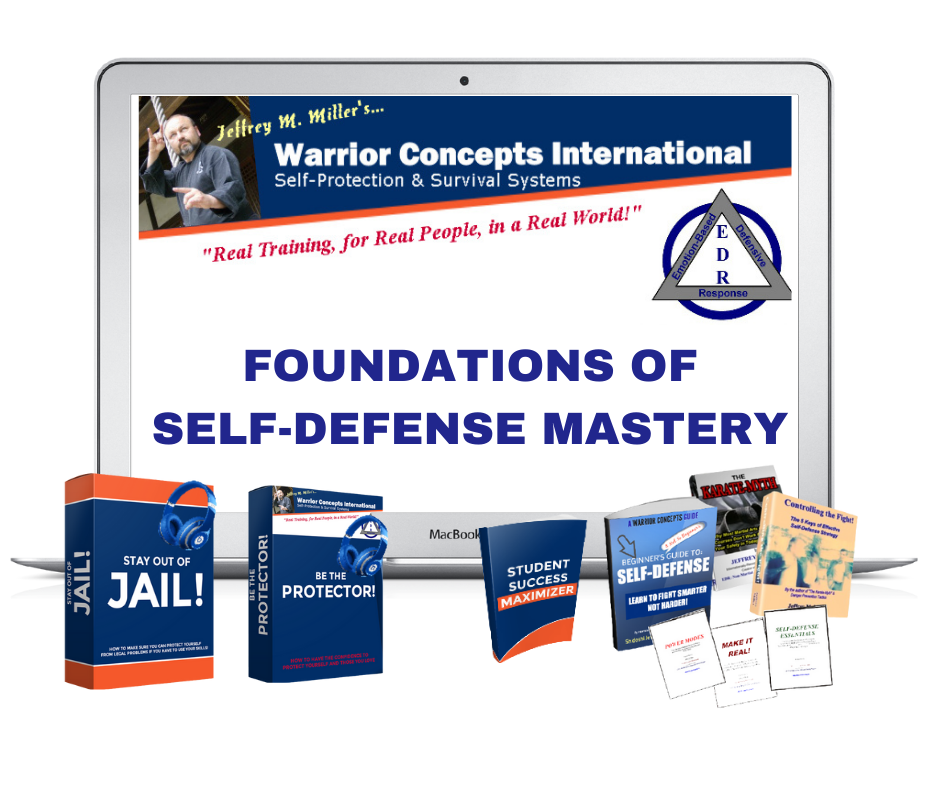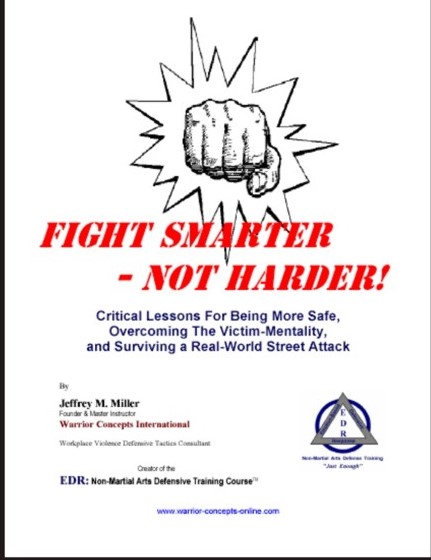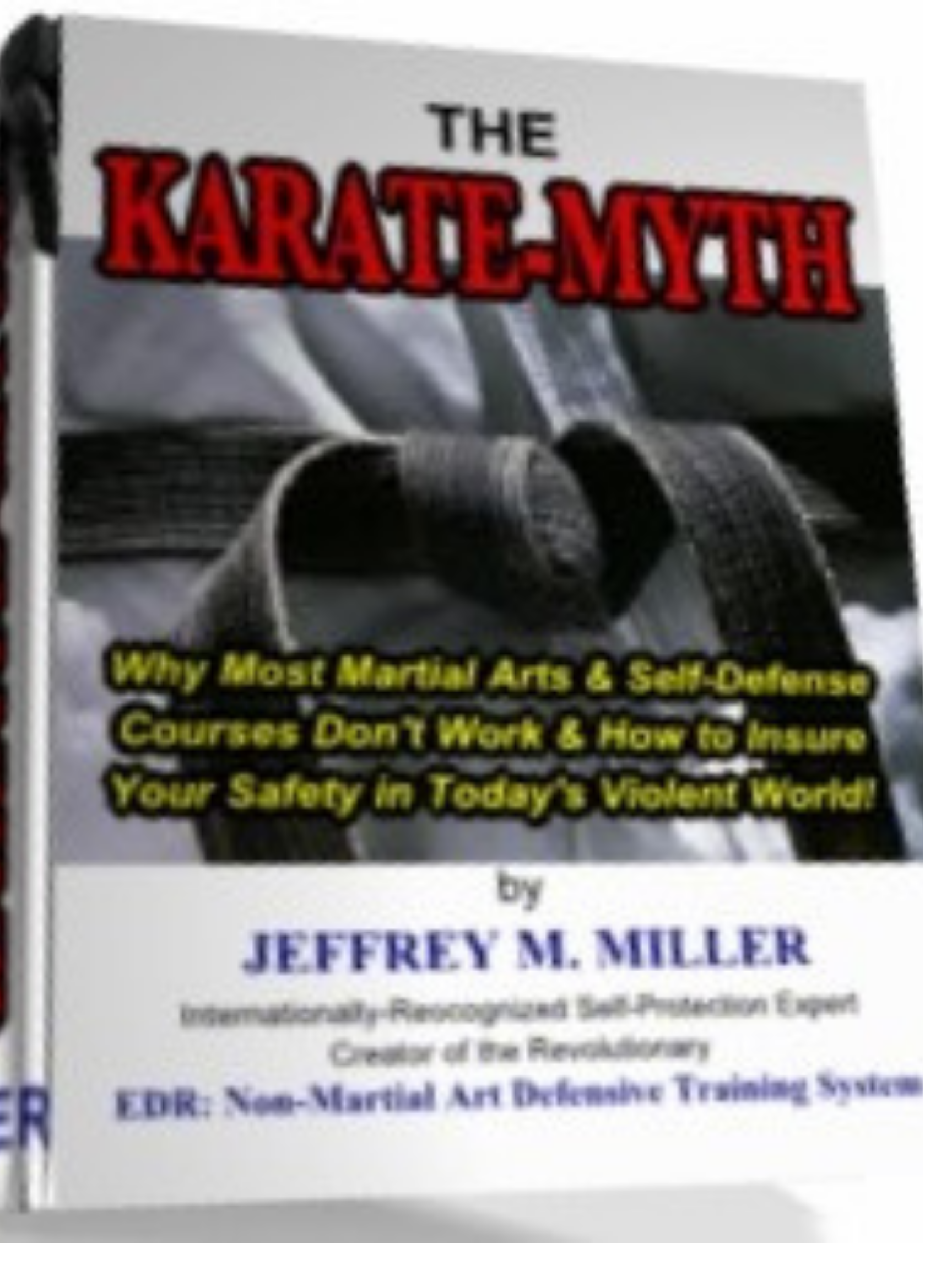"Modern Ninjutsu" vs. Modernized Ninjutsu
Translating the Art Without Losing the Soul
By Dai-Shihan Jeffrey M. Miller
Somewhere along the way, the term “Modern Ninjutsu” became a catch-all for collections of techniques, buzzwords, and gear—a kind of tactical cosplay where throwing stars and stealth outfits are paired with Krav Maga drills and Instagram reels - or the art has been stripped down to just the genin ('low-man's) reflection, where the point is to look like every other commando or tactical operator. For many, it looks impressive. But for those of us who were taught the deeper essence of this art, it’s clear that something vital is being lost.
You see, what I—and others like me—are trying to do isn't just about modernizing the look of Ninjutsu or cobbling together skills from various systems and calling it “Ninja.” It's about translating the principles and strategic mindset of the classical art into today’s world—without losing the depth, integrity, and purpose it was originally built upon.
I often ask myself: Am I truly bringing the essence of this art into the modern world… or deluding myself and just dressing it up to look relevant? Am I myself doing real, authentic Ninjutsu as it was developed and intended by past warrior's and master-teachers, or doing what so many others are doing in making up something they think is real Ninjutsu?
And maybe you’ve asked yourself something similar.
After some serious reflection and self-checking (as well as getting feedback from Soke and other senior Japanese master-instructors), here’s where I’ve landed: Modernized Ninjutsu is not about rebranding—it’s about realigning. We’re not inventing something new. We’re recontextualizing timeless principles for a world with SUVs, elevators, smartphones, parking garages, and legal consequences.
And we're doing while preserving the life-mastery lessons, deep personal philosophy, and the gokui, the secrets that make Ninjutsu, and a true practitioner of the art more than just a martial artist or self-defense student!
What 'Modern Ninjutsu' Often Gets Wrong
Let’s be honest—“modern Ninjutsu” has become a label too easily slapped on anything from MMA with a hoodie to fantasy-driven LARP sessions with shuriken and shadow walk references.
Too many instructors today mistake updating the art with replacing its foundations. They substitute strategy with spectacle. They abandon principle for popularity. And they often do it without any grounding in the deeper mechanics, mindset, or mission behind the original art.
The result? A growing number of students walking around with a false sense of preparedness, thinking they're learning authentic self-protection—when in reality, they're training choreography, not capability. Or, "tough-guy" paramilitary training as though modern ninjutsu amounts to nothing more than what looks like government law enforcement and military special operations teams.
So... if you've ever felt like something was missing... like there's a disconnect between what you've read or studied about ancient Ninutsu training and what's being passed off as "real" Ninjutsu today... you're not wrong.
✅ Free Worksheet: Want to make sure your training is grounded in real Ninjutsu strategy—adapted for today’s world but still true to the original principles and concepts?
Download the Modern Ninja no Hachimon Student Study Worksheet and learn how to train smarter, not just harder... and avoid the crap!
👉 Get your copy here
The Real Work: Modernization Without Dilution
Modernization, in the right hands, doesn’t distort—it distills. It sharpens. It refines.
And that work looks like this:
1. Understanding the Difference Between Technique and Principle
Most martial artists stop at “cool moves,” whether in kata form or henka ('variation'). Some even teach them very well. But memorizing a kata, being able to create variations keeping the attack the same, or mimicking an old battlefield maneuver isn’t enough.
The essence of Ninjutsu lies in the why—not the what.
If you want to truly modernize this art, your focus should be on extracting the principle behind a kata or strategy and asking:
“How would, or does it even work in a stairwell or other environment?
What’s the right angle, distance, and/or best timing for using this uke-nagashi against:
- a boxer's hooking right cross
- a tae kwon do stylist's roundhouse kick
- a jab-jab-uppercut combination
- etc?
How would this principle look in an active shooter scenario at work, or in my kitchen at 2 a.m. (when I'm not wearing my do-gi)?”
That’s where the art lives today.
2. Aligning Form to Context, Not Just to History
If the tactic no longer fits the battlefield, it’s not a “timeless” technique—it’s a fossil. That's what people say all the time about certain weapons, tactics, or other skills that they don't understand. But, that doesn’t mean we discard these things—it means we adapt them.
It means asking yourself, what can sword work teach me or add to my abilities with not just a knife, but also a cane, police baton, or more having more precision in my body movement and attack angles. It means that, instead of dismissing or turning weapons like shuriken, kyoketsu-shoge, or spear into cosplay toys... asking ourselves how do these ancient weapons serve as models for modern-day items that have the same dynamics?
Instead of a mountain pass, we could think of using a modern doorframe as a chokepoint, allowing for the same kind of surprise attacks our ancient Ninja forefathers used to box in and make movement more difficult for larger or better armed opposing forces. Or, instead of a rock or nio-i-bo ('nyoh-ee-bow'), leveraging a car door as a barrier, a bludgeon, or a trapping tool. These aren’t departures from tradition—they’re embodiments of the same tactics and, yes, "timeless" principles and concepts that led a shinobi warrior in ancient Japanese to use gates, trees, and castle architecture as improvised weapons and aids for their defense and escape.
If the world has changed (and it has), so must our expression of the art—but not its kotsu - its essence.
3. Resisting the Urge to “Collect Cool Stuff”
Too often, “modern Ninjutsu” becomes a sampler platter of whatever looks tactical to it's creator. A little BJJ here, some judo throws or weapons disarms there, toss in a smoke bomb for flair (yes, pun intended!). The problem? There’s no strategic cohesion.
We were taught that every technique must come from the same mindset, the same spine of strategy, even if the surface techniques look different. If it doesn't fit the philosophy of survival, evasion, deception, adaptation, and disruption—it doesn’t belong in the system.
If you’re serious about this path, resist the trap of becoming a curator - a collector of techniques. Become a strategist and tactician instead.
4. Applying the Art’s Original Intent: Survival Through Adaptability
This one is simple, but it's the entire point: Ninjutsu is about surviving through intelligent adaptation. It's not about doing things differently for "style's sake," or just to be different. And it certainly wasn't created by someone who needed to be in charge - who needed to be the founder or grandmaster of his or her own system.
The Togakure Ryu of Ninjutsu, the oldest and most robust system of the art within the Bujinkan, Genbukan, and Jinenkan systems wasn't named and formalized until it was in it's 3rd generation, when the grandson of Daisuke Togakure recorded his grandfather as the lineage's origin... because it was still working all those years later!
The shinobi of old didn’t survive because they fought the best. They survived because they adapted the best. They used terrain, timing, disguise, chaos, misdirection, patience—and yes, violence when necessary. But, all of those things weren't just thrown together. They were bound by the same universal principles and concepts so each skill worked with all of the others... not contradicting each other.
And, if you’re not training to think and adapt under pressure, instead of blindly adhering to some "official" style, then the art becomes an aesthetic, not a strategy. It becomes just another martial arts option, among a slew of martial arts options -- not the complete system of personal development, success, and personal protection it was originally designed and developed to be!
Bringing Ninjutsu Into the 21st Century—with Purpose
When we talk about using doorframes, corners, parking structures, or smartphone camera reflections for awareness or escape, we’re not stepping away from the art—we’re stepping into it more fully than many realize.
So no—we’re not deluding ourselves for thinking like this and trying to modernize the art - adapting to the context of today's world and using the principles and concepts in the best ways possible to solve the problems, threats, and danger... as they appear now. Using the same principles and concepts in a world that looks different... while human beings and the way the interact and, yes, attack each other, remain the same.
If we're doing that, then you and I are doing exactly what the art was designed to do: survive time itself!
And if you’re reading this and thinking, “That’s what I want to do, too”—then good. You’re part of the small circle of us who aren’t just practicing Ninjutsu as a past time or fantasy game of "warrior make-pretend… we’re living it.
That means that we'll continue to focus on staying sharp - staying fluid and adaptable - and we'll keep translating the past into something that keeps both ourselves and our loved ones alive, aware, and using the deeper lessons of the art to create the life we really want to be living while learning the skills and techniques necessary for protecting that life from anything that might threaten it.
If we're going to authentically pass this on for the benefit of future generations, then not only do we owe it to ourselves to take this approach, to live these lessons, but... the art of authentic Ninjutsu depends on it!
Want to Modernize the Art Without Losing Its Soul?
If this approach resonates with you—and you want a tool to help you integrate classical principles into real-world, modern scenarios—download the Classical-to-Modern Ninja no Hachimon Student Worksheet.
It breaks down the traditional 8 gates of the Shinobi and helps you apply them to 21st-century life, training, and threat situations.
New Accelerated "Foundations of Ninja Self-Defense" Online & Distance Learning Program!
Just because you can fight or carry a gun, doesn't mean you have a broad enough skill set or the skill-proficiency to handle any attacker, any fight style, or any threat scenario that could come at you, quickly, efficiently, and with the least amount of wear-and-tear on your in the process! This "foundations" course has more in it than most full programs! Remember: "The one with the most options has the greatest chance for success!" -- Jeffrey Miller
Other Books and Training Resources:
No techniques! Just a solid tactical framework for "making sense out of the chaos!"
The best FREE book on critical self-defense topics that span across many different scenarios.
Created after 9-11 to help serious defenders with proper mindset, observation, & skills for escaping danger!
Breaking through one of the biggest myths in the martial art and self-defense world... the "Karate-Myth!"
FREE WEEKLY ONLINE TRAINING FROM DAI-SHIHAN MILLER!
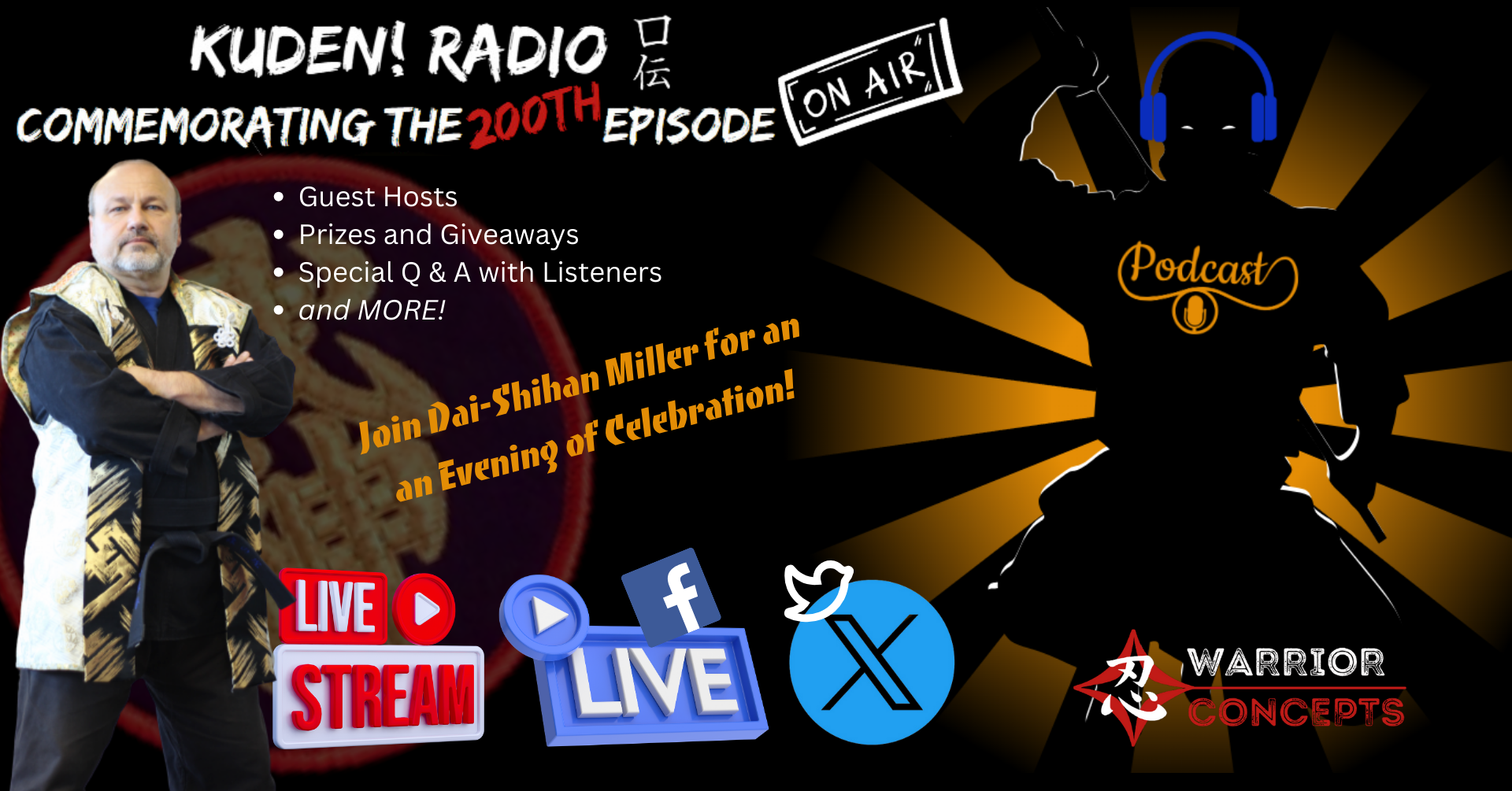
Mindset, Life-Master, and Warrior Living for the modern protector!
Monday Evenings at 8pm eastern
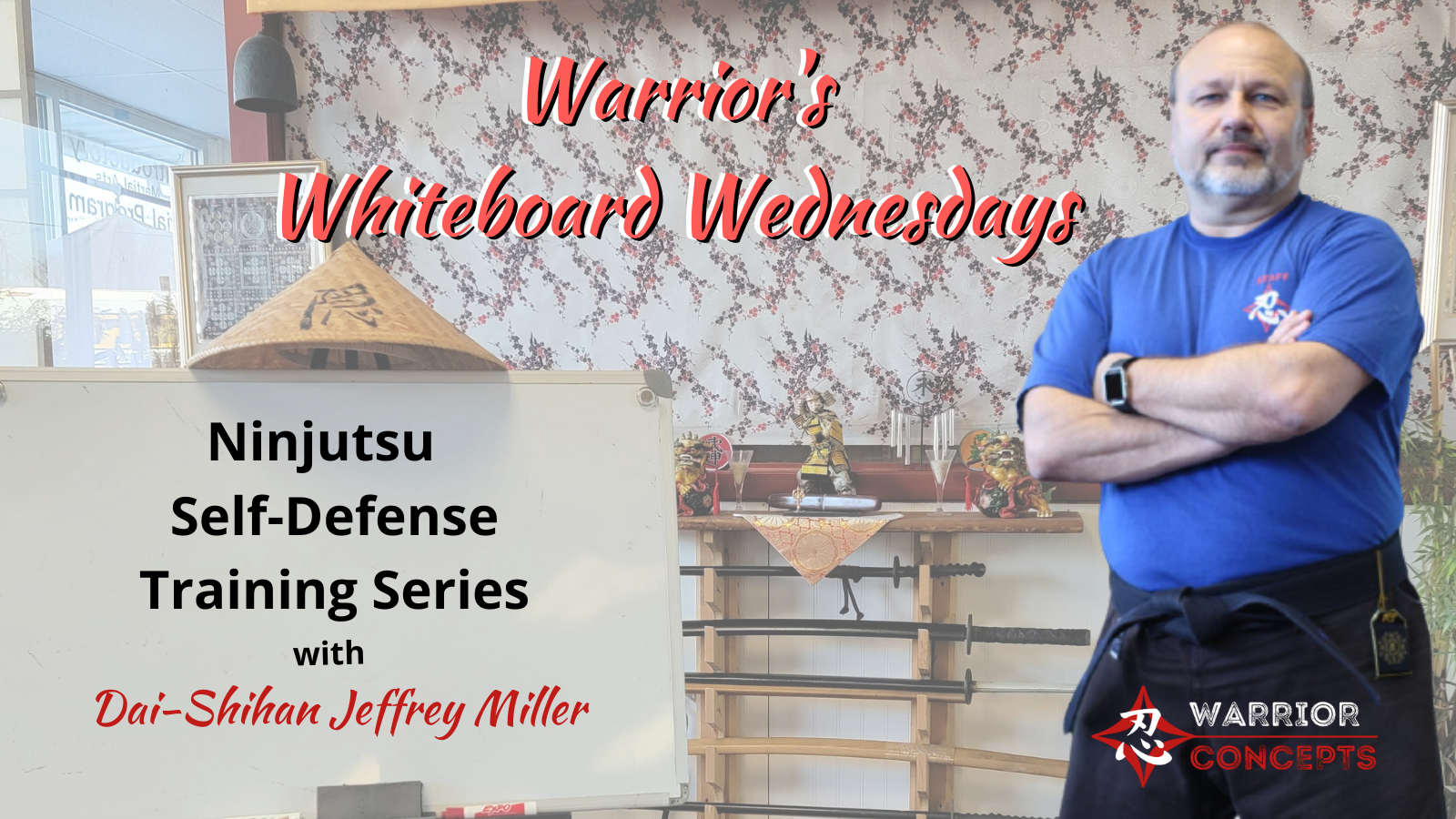
Strategies and Tactics to Put More Power & "Bite" in Your Techniques!
Wednesday Afternoons at 3pm eastern
Ninpo-Masterclass
Online Virtual Ninjutsu-Based Self-Protection Training Classes
with Dai-Shihan Miller!
Proven, Time-Tested Lessons for the Modern Warrior-Protector!
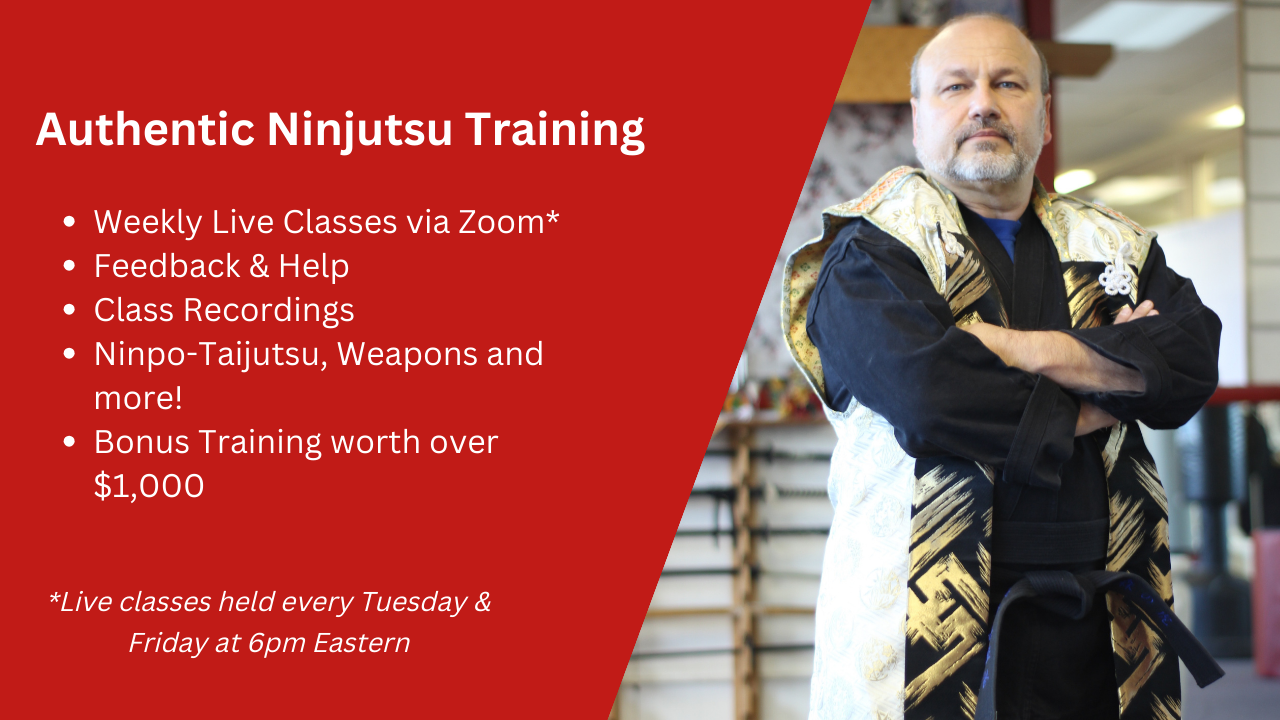

ABOUT YOUR INSTRUCTOR
Dai-Shihan Jeffrey Miller is an internationally-recognized self-defense expert, teacher, speaker, and author. He is a personal student of Soke Masaaki Hatsumi, 34th Grandmaster of the Togakure school of Ninjutsu and 8 other classical systems of Japanese combat and personal warrior mastery.
He has trained in the martial arts since 1975, studying a virtual encyclopedia of martial arts - arts like Goju-Ryu Karate, Tae kwon do, Jeet Kune Do, and many others. As a former federal police officer, member of the U.S. Army Military Police Corps, and a private security specialist and violence consultant, his primary focys os on helping to translate these proven, time-tested lessons and skills for use by serious warrior-protectors in the modern world of the 21st century!
His knowledge and real-world street experience through which he filters these lessons, and his direct, personal understanding of what it takes to handle actual, violence and violent people makes him the perfect choice for those looking to develop the ability to protect themselves and others from danger!
